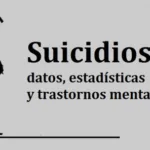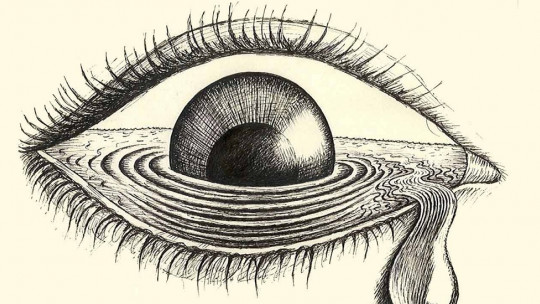
According to data provided by the World Health Organization (WHO), more than 800,000 people die annually from suicide and many more make the attempt without success. In 2001, suicides recorded throughout the world exceeded the figures for deaths from homicide (500,000) and from wars (230,000) while, in the vast majority of countries, it constitutes the first cause of unnatural death ahead of accidents. circulation or murder.
It is clear that we are talking about a very serious public health problem, which, even today, continues to be a taboo subject for the majority of governments and societies that suffer from it, as well as for the families involved. What is being done to prevent part of the population from ending their own lives? Next we will see what they are Known measures to reduce the suicide rate
The stigma and taboo of suicide
First of all, to know how to intervene in the generalization of suicide attempts, we must take into account that It is difficult to research this topic, since it is covered by taboo and stigma. From the data we have seen, many more cases are assumed than those officially notified because death by suicide is a very sensitive matter, even illegal in some countries, and may remain misclassified under deaths due to “driving accidents.” or “cardiac arrests.”
Studies on this aspect, such as those by psychologist Thomas Joiner, elucidate that more than 40% of people who have lost a loved one due to suicide I would lie about it to hide the truth
The registration of a suicide case is a complicated procedure that involves several different authorities, including police, health personnel, family members and the media, who do not always confront the facts with the transparency and information necessary to coordinate their prevention.
The Werther effect and information restriction
The focal part of these difficulties lies in the stigma associated with mental disorders and suicidal behaviors, promoted mainly by fear and ignorance. One of the main pillars of misinformation falls on the well-known Werther effect
The Werther effect (or its variants “copycat”, “domino”, “call”, among others) deals with the novel The Sorrows of Young Werther written by Johann Wolfgang Von Goethe in 1774, where the protagonist suffers so much for love that he decides to end his life. This behavior was copiously imitated by many young people of the time, to the point where the novel was banned by the authorities.
Later, sociologist David Phillips carried out a similar study between 1947 and 1968 showing that when the New York Times published a story related to suicide, suicide rates increased nationwide the following month.
Actually, the idea that suicide has a “contagious” aspect That is, if a famous person takes his or her life or similar news comes to light, it will lead others to consider suicide as a desirable option. It is very difficult to prove, and the studies that report it are contradictory. Suicide rates remain stable over time and this is corroborated by statistics available from the 19th century onwards, which has made it possible to reach global agreement among all specialists about the most common causes.
The main causes of suicide
Among the main risk factors are: mental illness, depression and psychosis disorders, as well as drug use and addictions chronic medical illnesses caused by pain and, finally, major life crises, the most frequent being, in 60% of cases, the breakup of a couple (in the end, we continue to commit suicide for love), preceded by problems in the family environment and economic problems.
It is also necessary to mention social isolation, uprooting and the lack of emotional ties with peers.
So, to what extent can talking about suicide help people who find themselves in these situations and thinking about it recurrently? Certainly informing and raising awareness can encourage a person who has contemplated ending his or her life to take action as that straw that breaks the camel’s back, but at the same time, It’s the only way people know they can ask for help when you have reached this point and the only response you find is silence.
According to psychiatrist and suicidology expert Carmen Tejedor, responsible for the first suicide prevention plan carried out in Spain, to prevent suicide we must allow people to talk about suicide.
Attempts to end one’s own life
Nobody wants to die; The idea that suicide is an act of free will understood as the person voluntarily deciding about his actions derives from a romantic concept of the person’s freedom. There is no freedom in suicide, only constant and intense despair until the individual considers his death as the only way to avoid suffering
For every completed suicide there are between 20 and 30 people who put their lives at risk to try to put an end to it. These attempts are the approaches that the individual makes, trials, to see how to face fear, physical pain and breaking with your own sense of self-preservation The expression is false: “he who has not managed to kill himself is because he was not really going to do it.” If a person has tried to commit suicide once, it is very possible that they will try again, and the next attempt may turn out well.
Psychological intervention and prevention
Given the majority of attempts or failed attempts, options may open up that include pharmacological and psychological treatments through which many people discover new reasons to continue living It has been estimated that without an adequate suicide prevention plan, 30% of those affected will repeat the attempt, but thanks to specialized intervention only 10% will do so.
The role of society is crucial, currently a few countries have included suicide prevention among their health priorities and only 28 countries have reported that they have a national suicide prevention strategy.
The most direct measures have consisted of information restriction and restriction of lethal means (such as selecting disclosure of information about suicide, over-the-counter medications, stopping the use of barbiturates…). It has been shown that if a person begins suicidal behavior, but it is interrupted or inaccessible, he does not tend to run somewhere else to finish it. Limiting access to a lethal means translates into practice by installing physical barriers in risk areas such as windows of certain hotels and bridges.
However, we must go further and bet on the coordination of institutions Firstly, responsibly report from the media to break the stigma, particularly around mental disorders and suicide. The lack of such responsibility makes it impossible for people who are thinking about taking their own life or have tried to do so to receive the help they need.
Secondly, in relation to the aforementioned, having reliable information whose data allows for further study of suicidal behavior with a view to its prevention (only 60 Member States have good quality civil registry data that can be used directly to estimate suicide rates) including civil suicide registries, hospital records, and nationally representative studies.
Finally, it should be noted that the first WHO world report on suicide “Suicide prevention: a global imperative” published in 2014, seeks to raise awareness among the population of the importance of suicides and suicide attempts, as well as the need urgent to develop comprehensive prevention strategies within the framework of a multisectoral approach to public health so that Member States have managed to stabilize national suicide rates at 10% by 2020.








